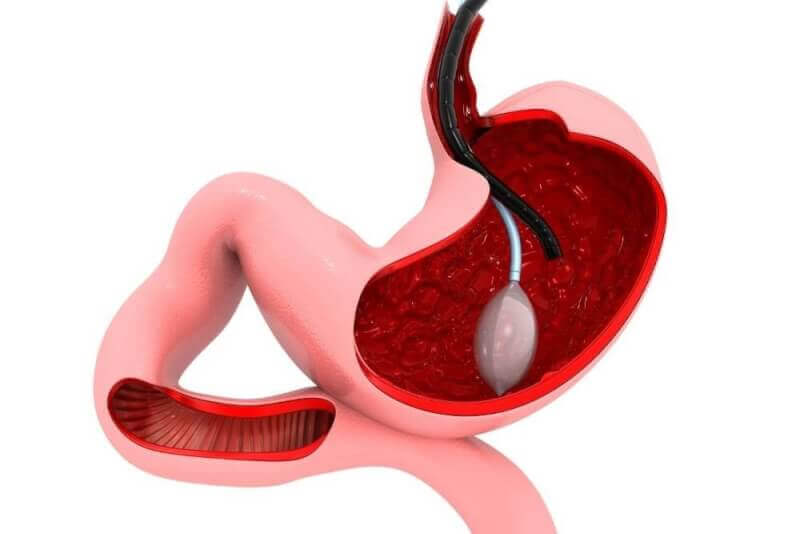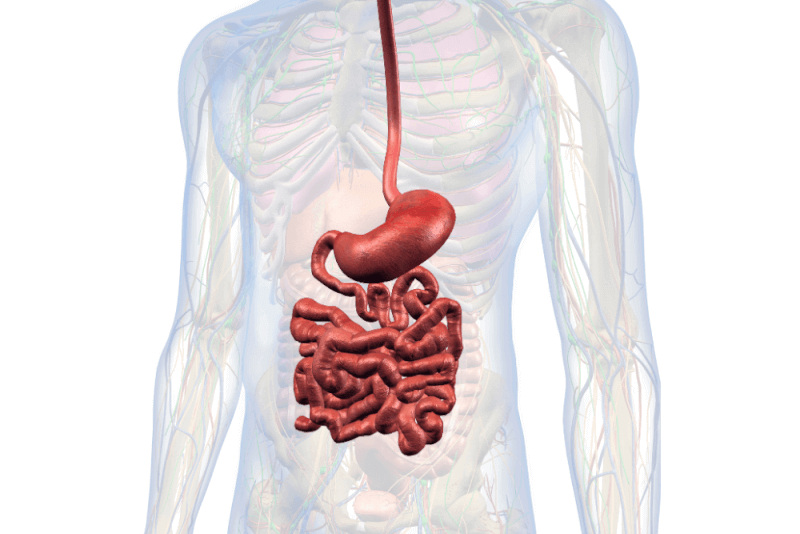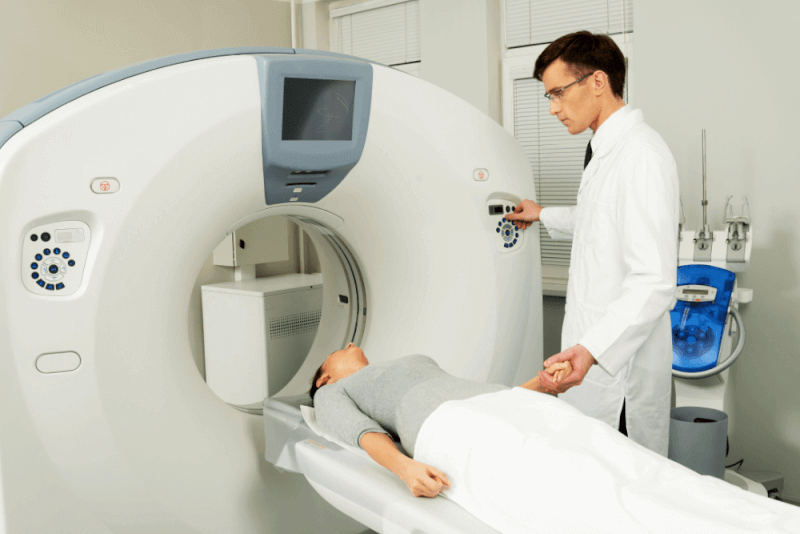30 Second Summary
- Sleeve gastrectomy is a surgical procedure in which about 80% of the stomach is removed and the remaining part is closed with a staple line. It is performed laparoscopically, that is, closed.
- After the entrance and exit sections of the stomach are protected, cutting and extraction processes are provided. The surgery is completed without disturbing the continuity of regular digestion in the digestive system.
- Liquid foods can be consumed for the first 7 days after surgery, soft foods for 2-3 weeks and normal foods after 1 month. It is necessary to pay attention to lifelong eating changes.
What is sleeve gastrectomy?
Sleeve gastrectomy surgery, also called stomach reduction surgery and sleeve gastrectomy surgery, is a procedure among obesity treatments. In this procedure, which basically involves the removal of 80% of the stomach, no procedure is applied to the entrance and exit parts of the stomach. Removal of the middle part of the stomach reduces the volume of the stomach. This results in a significant reduction in daily calorie intake due to a decrease in appetite. Reducing the daily calorie intake leads to significant weight loss in a short period of time. Moreover, patients do not feel hunger during this process.
The reason why this operation is called sleeve gastrectomy is that the stomach takes the shape of a tube between the esophagus and the intestines after the irreversible reduction of the stomach, which is shaped like a pouch. No implants are used in this procedure. Only a significant portion of the stomach tissue is removed by closed-method surgery.
The main success of this method, which is highly effective in the treatment of obesity, is due to the fact that the stomach takes the shape of a tube, not the reduction of the stomach volume. Because less hunger hormone is secreted in the tube-shaped stomach. On the other hand, the absence of a significant part of the stomach tissue after sleeve gastrectomy surgery may cause some problems in the digestion of food.
How is sleeve gastrectomy surgery performed?
Sleeve gastrectomy is an operation performed under general anesthesia and laparoscopic method. Some specialists can also use medical robotic devices in this operation. The stages of sleeve gastrectomy surgery are as follows:
- In sleeve gastrectomy surgeries performed with the closed method, small incisions are made in the determined places for access to the stomach. The number of incisions varies according to the surgeon and the patient. Since the incisions opened in sleeve gastrectomy surgery are very small, they do not cause deterioration of the aesthetic appearance.
- In order to prevent the stomach from being reduced more than necessary, a tube with a width equal to the diameter of the esophagus is first inserted. This tube, which is placed exactly at the entrance of the stomach, is called a calibration tube. The biggest advantage of the calibration tube is that it allows the stomach to be shaped as if it were an extension of the esophagus. In this way, excessive reduction of the stomach during surgery is prevented and complications such as obstruction or excessive stenosis after surgery are prevented.
- In the next stage, vascular procedures are performed. These procedures are carried out with the utmost care to prevent bleeding.
- After the vascular precautions are taken, the excess tissue in the stomach is cut with special and extremely sharp instruments.
- The cutting devices used in surgery also perform stapling. For this reason, cutting and punching are carried out simultaneously.
- At the end of the operation, the calibration tube placed at the entrance to the stomach is removed.
- Checking for leakage, which is an important risk factor in sleeve gastrectomy surgeries, is also performed at this stage. Some leak tests can also be performed after surgery.
- In the last stage of the operation, the incisions are sutured and the operation is completed.
Who can undergo gastric sleeve surgery?
Sleeve gastrectomy is a method used in the treatment of morbid obesity. In addition, many diseases associated with morbid obesity, such as type 2 diabetes, are indirectly treated. The biggest reason for this is that reducing the volume of the stomach directly reduces insulin. In addition, sleeve gastrectomy is not an operation that patients will have to undergo to look thinner. Among the features that patients should have in order to be able to undergo this surgery are the following:
- Body mass index above 40
- Having a body mass index between 35 and 40 but having diseases such as sleep apnea, type 2 diabetes or high blood pressure
- Having a body mass index between 30 and 35 but having a metabolic disorder such as type 2 diabetes
- Sleeve gastrectomy surgery is also performed to prepare severely obese patients for gastric bypass surgery.
- Be over 18 years of age. In order for sleeve gastrectomy to be applied to obese children, long-term follow-up by psychiatry, endocrine, nutrition and child development specialists and the approval of each specialist is required.
Nutrition after sleeve gastrectomy
The success of sleeve gastrectomy is directly proportional to the loyalty and determination of patients to their new diet after surgery. For this reason, the nutrition program prepared specifically for the patient by endocrinologists and nutritionists after surgery should be strictly followed and all rules should be followed. Although the nutrition program varies according to the patients, in general, the following are among the rules that patients with sleeve gastrectomy surgery should follow.
Early nutrition
Due to the reduction of stomach volume in sleeve gastrectomy surgery, nutrition differs in the early period. For this, the program that patients must follow includes the following.
- A clear liquid diet is applied on the first day of surgery.
- 2 to 14 days after surgery. Between days, patients should follow a liquid diet. Foods that can be consumed on a liquid diet include fruit juice, water, broth, yogurt and protein drinks.
- 3 days after surgery. And five. Between weeks, patients should consume soft food. At this stage, the stomach gets used to digestion. For this reason, it is recommended to mix the food with yogurt, puree it or mix it with water.
- After the 5th week, patients can switch to solid foods.
Long-term nutrition
The most important point that people who will undergo sleeve gastrectomy surgery should know first is that their entire diet will change after the surgery and this change will continue for life. Among the points that patients should pay attention to in the long term are the following.
- It is always important not to fill the stomach completely. For this, it is important that portions are small.
- Patients must consume 3 main meals. They should not skip meals and consume 2 snacks as much as possible. Otherwise, there is a risk of eating too much in a single meal.
- Patients should consume all foods after chewing them thoroughly. Because the stomach does not have its old digestive power. For this reason, chewing must take over a significant part of digestion.
- Fluids should not be consumed while eating.
- Very hot foods should not be consumed.
- High-carbohydrate foods such as pasta or rice should not be consumed.
- The most important nutritional source for patients in the long term after surgery will be protein. For this, patients are recommended to consume approximately 60 g of protein per day.
- Meals should always be eaten at a table. In this way, meals are consumed more slowly and with more chewing.
- Fluid intake should be stopped half an hour before meals. In this way, nausea can be prevented.
- It is recommended to drink 6-8 glasses a day of caffeine-free, non-carbonated and calorie-free drinks.
- Carbonated drinks should be avoided for life.
- The small amount of food consumed should be of high quality.
- Necessary vitamin and mineral supplements should be used.
Exercise after gastric sleeve surgery
Starting to exercise after sleeve gastrectomy provides faster and more efficient weight loss. For this reason, it is recommended that patients start exercising regularly 3 months after surgery. However, it can be challenging for patients who do not have the habit of exercising regularly. For this, it is important to start exercising for short periods of time and to find a type of exercise that the patient likes. Patients who start exercising after sleeve gastrectomy surgery should generally pay attention to the following points.
- Before starting exercise, the doctor's approval must be obtained and the planned exercise must be explained to the doctor.
- When you start exercising, you should start slowly. In order to lose more weight, you should not exercise at a fast pace or more than the prescribed exercise program.
- The most appropriate sport in the early postoperative period is walking. It is important to walk for the duration and at the pace recommended by the doctor.
- Abdominal movements and weight exercises should be avoided during exercise.
- While strengthening muscle and bone structure, exercises that will increase fitness over time should be preferred.
- Swimming and fitness are among the recommended exercises after surgery.
Vitamin and mineral supplementation after gastric sleeve surgery
After sleeve gastrectomy, various vitamin and mineral supplements should be used because the stomach's ability to absorb nutrients is weakened. Multivitamin supplementation is usually planned for patients. The use of multivitamins is as follows:
- For the first month after surgery, vitamin supplements are in the form that dissolves in the mouth.
- Between 2 months and 1 year, 2 multivitamins per day are recommended.
- After 1 year, patients should use 1 multivitamin per day.
- In addition to multivitamins, it is also recommended that patients take calcium supplements once a day.
- Finally, patients should receive vitamin B12 injections once a month. If vitamin B12 is taken orally, it cannot be digested in the stomach. For this reason, it must be administered as an injection.
Pregnancy after sleeve gastrectomy
In scientific studies conducted after sleeve gastrectomy surgery, it has been observed that hormones are regulated after surgery and therefore the possibility of getting pregnant increases significantly. However, it is not recommended to get pregnant for the first 1 year after gastric sleeve surgery. Due to the high risk, protection is necessary.
The reason for waiting up to 1 year after surgery is that the patient may experience deficiencies in various vitamins and minerals while adjusting to the new diet. This can cause harm to both mother and baby. Because of this risk, patients should have their vitamin and mineral levels checked before planning a pregnancy.
In addition, it is recommended that patients should not make pregnancy plans after sleeve gastrectomy surgeries due to the fact that weight loss stops with the pregnancy process and patients are psychologically negatively affected by this.
Differences between gastric sleeve and gastric bypass
Gastric bypass has been a long-standing treatment method. However, due to the advantages offered by sleeve gastrectomy surgery, it is less preferred in recent years. The differences between gastric sleeve surgery and gastric bypass surgery are as follows.
- In gastric bypass surgery, in addition to reducing the size of the stomach, the anatomical structure is changed by changing the location of the gallbladder and intestinal branches. In sleeve gastrectomy, only a part of the stomach, including the area where the hunger hormone is secreted, is removed and the anatomical structure is not changed.
- If patients gain weight after sleeve gastrectomy surgery, it is possible to repeat it. However, since the anatomical structure is changed in gastric bypass surgery, it is impossible to repeat it.
- Risks such as ulcers and the risk of intestinal entanglement seen after gastric bypass surgery are almost never seen in sleeve gastrectomy surgery.
- After gastric bypass surgery, the need for vitamin and mineral supplements is much higher than in patients with sleeve gastrectomy.
Summary of Surgery
Duration of Surgery 2 hours
Method of anesthesia General anesthesia
Hospitalization Duration: 3 days
Return to Work Period: 7 days











